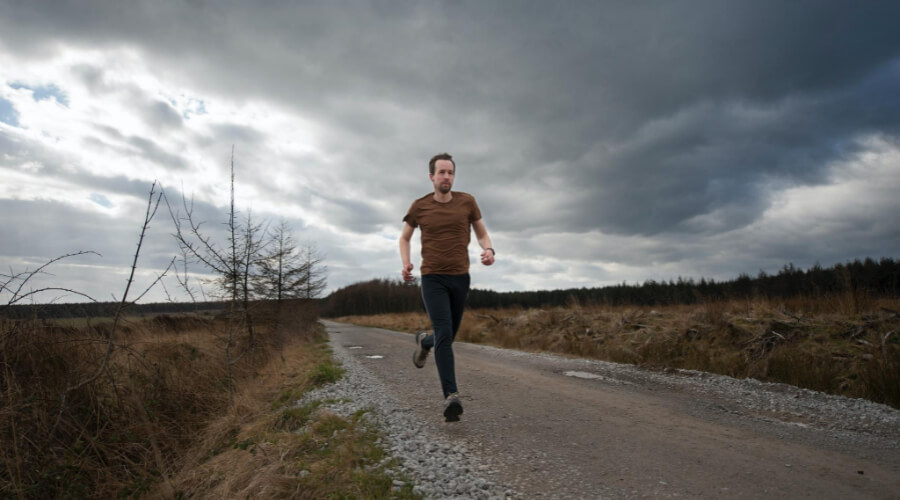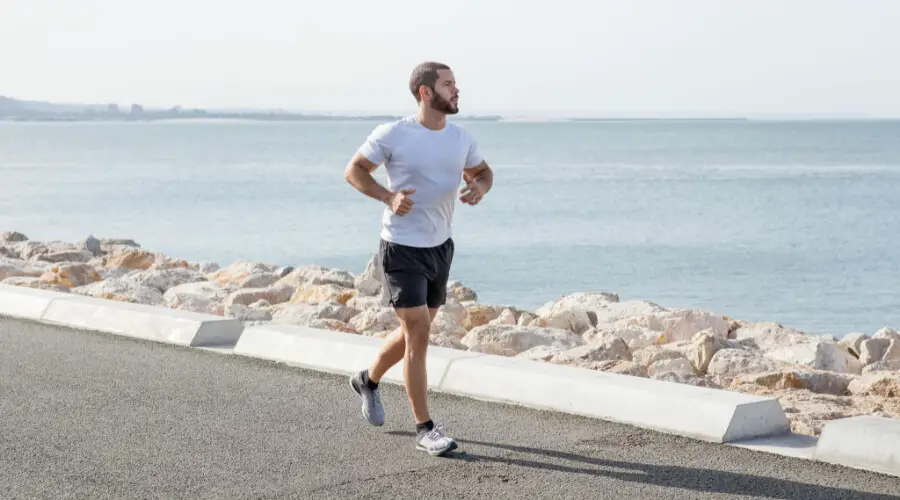There is a raging debate that we should avoid running on hard surfaces such as concrete. However, city dwellers have little or no option. Most paths used by city dwellers for running comprise concrete. The question of whether it is bad or good to run on concrete is not conclusively answered. Although running on concrete is sometimes associated with back pain and knee injuries, emphasis is put on the right running shoes to remedy the situation.
It is also argued that with better running shoes and sound cushioning socks, your feet will mitigate the impact of landing on a hard surface. Humans are also known to possess fantastic shock absorption features. Whenever you run onto a newer surface, you automatically readjust the spring and change the stiffness of your leg, thus, dynamically altering the way your legs absorb impacts.
Does Running On Concrete Cause Back Pains And Knee Injuries?

Even though not scientifically backed, running on hard surfaces stresses human joints. Proponents might argue that your body adjusts to absorb impacts depending on the running surface, but shock absorption has a limit, and we don’t understand where the line is drawn.
Back pains are escalated when you run on a hard surface such as concrete. Each step taken on a hard surface jolts your spine and leads to severe back pains.
On the other hand, your knees are the first recipient of impacts when running on a hard surface. Knee pains might not necessarily emanate from running on hard surfaces, but beware that your knee joints often get affected because the knees primarily absorb shocks resulting from the running surfaces. If impacts are overwhelming, injuries are bound to happen.
This article will discuss the upside and downside of running on concrete. We will additionally talk about tips to help you prevent pains and injuries associated with running on hard surfaces. Stay on the page, and at the tail end, you will be better placed to deal with knee and back pains.
Should I Run On Concrete?
There is no undisputed answer to this question. Older folk get uncomfortable running on hard surfaces, but younger folk don’t experience much discomfort on the same surface. Let us delve into the pros and cons of running on concrete, then decide whether it is good or bad for you.
Why It Is Good To Run On Concrete
Humans have individual inbuilt shock absorption when running. Contrary to the hype accorded to running shoes, the primary source of shock absorption comes from your knees, ankles, foot, and hips.
Whenever your footsteps are on the surface for the first time, you automatically readjust the impact absorption body parts to account for the surface you are running. If you hit a hard surface, your legs stiffen, sending a signal to the hips, knees, foot, and ankles to readjust accordingly.
Secondly, the correct running form minimizes injuries regardless of the running surface. If you have a poor running form, it will escalate back pains and knee injuries even if you don’t run on hard surfaces. I recommend you check your running form before deciding whether running on concrete is good or bad. A better running form does not only minimizes pains and injuries but also enhances running efficiency.
Why It Is Bad To Run On Concrete
When running on hard surfaces, your joints receive more impact. It is estimated that the highest pressure on a runner’s foot when running on concrete is more than 14% higher compared to running on grass.
The impact issue could be psychological, but a good running form is not enough to reduce the joint impact resulting from running on a hard surface such as concrete. If the pain in your joints persists, consider taking preventive measures and avoid running on concrete.
Softer running grounds are synonymous with increasing ground contact time, enhancing impact redistribution. Better dispersed impacts result in fewer injuries and painless experiences to your joints and lower back.
How Does Running On Concrete Impact Joints?
When running, your foot imparts downward pressure on your ankles and knees. The running surface counters the downward force. Concrete being a hard surface, doesn’t easily absorb the imparted pressure; hence the energy is sent back to your joints.
Unlike soft surfaces that distribute the impacts efficiently, most energy emanating from the downward push of your footfall finds its way back to your shock-absorbing joints. The extent of impacts overwhelms the joints resulting in pains and injuries.
Tips To Minimize Pains And Injuries

Since it is not entirely evident that pains and injuries to your joints and the lower back emanate from running on concrete, there exist ways to minimize and prevent them besides avoiding running on concrete:
1. Use Appropriate Running Shoes And Cushioned Running Socks
The right running shoes and socks complement each other to ensure that your gait and stride are enhanced. Suppose your footfall hits hard when landing; opt for a springy or extra cushioned pair of running shoes. Accompany the pair of running shoes with a well-padded pair of running socks to assist in shock absorption.
2. Check Your Running Form
An excellent running form helps in preventing injuries and joint pains. Execute the correct running form by taking short strides and ensuring that you use the balls of your feet when landing. Soft landing and short strides ensure that your body is not strained while running.
Another option is trying to run gently by toning down aggressiveness and adopt smoother strides. The process helps your joints to feel good.
3. Toughen The Quadriceps And Hamstrings
Strong muscles repel injuries and pains. Ensure that you work out the hamstrings and quadriceps muscles to strengthen them.
For instance, quadriceps assist in keeping the kneecap in position; hence when the muscles are strong, impact absorption by your knees is enhanced.
4. Enhance Hip Mobility
Do simple exercises such as stretches. Stretches enhance the flexibility of your hip, which in turn minimizes the pain level experienced by your lower back and other joints.
FAQ
Does Cross-Training Prevent Pains And Injuries?
Yes, cross-training does you loads of good by relaxing your joints and giving them a break. Put you’re running aside and go biking or swimming to rest your knees and other joints.
Conclusion
If you dwell in the city, running on concrete is the only option available for you. It might be bad and unhealthy to run on concrete, but try changing your running form and shoes to boost the chances of preventing injuries.

